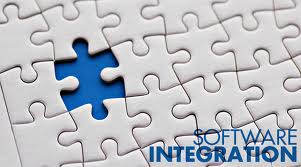UIDs must be submitted to iRAPT during the transaction process
We’ve been getting a lot of questions lately about iRAPT, WAWF and the UID Registry from vendors trying to make sense of recent changes and how they can stay compliant. We can’t blame them. DoD compliance is critically important, and making sense of shifting vocabulary and guidelines can be an issue. So let’s look at these changes, what they could mean for vendors, and the best way to handle data submission. 
First, a cosmetic change: a few months ago we wrote a post on Wide Area Work Flow being renamed to Invoicing, Receipt, Acceptance and Property Transfer. The primary purpose of our post was to ease the minds of those working with these tools, especially those using Odyssey’s software.
“In November of last year, e-Business Suit 5.6 was released and thus changed the name of WAWF to iRAPT. Fear not, if you were familiar……. you’re also familiar with iRAPT. It’s still the secure web-based system used by the DoD for electronic submission of advance shipping data, invoicing, receipt, and acceptance, which allows DoD vendors to submit and track invoices and receipt/acceptance documents. That means that, critically, it allows government personnel to process those invoices in real-time. The most important thing to note is that the name change doesn’t alter the critical nature of the application or Odyssey’s position in the process.”
That last line is key. The name change doesn’t alter its necessity, and it doesn’t alter how vendors use Odyssey’s software. We’ll dig into this more specifically in a moment, but the same few clicks that were previously used to submit data continue to be effective. As a side note, since the writing of that article, version 5.7 of the e-Business Suit has been released. Here is a Power Point outlining all the updates in 5.7.
Secondly, and more importantly, is the recent migration of the data needed to flow to the Registry. This gets down into the meat of the issue. Back in October we wrote about the migration and what it could mean for DoD vendors and the compliance process.
“Some big changes are coming to the UID Registry. Specifically, the Registry is migrating to the Wide Area Workflow (WAWF) [iRAPT] e-Business Suite, and with it, changes to when and where UID information needs to be submitted for new acquisitions. This new policy appears to be an attempt to make things easier on the supplier, as well as ensure DoD compliance across the board by all registered vendors.
“Some users may be accustomed to simply submitting contract and transactional shipment data to WAWF initially and then circling back to the IUID Registry when it’s convenient, if at all. That will no longer be a viable option, as the data will now flow from WAWF to the IUID Registry. In other words, the Registry will no longer exist in and of itself for new acquisition submissions.”
Think of it this way. Vendors work with iRAPT to submit their Mil-Std 130n data, which flows to the IUID Registry. The DoD then uses the IUID Registry to track assets and their life cycle events. Plainly put, vendors must do this.
The DoD then uses the IUID Registry to track assets and their life cycle events. Plainly put, vendors must do this.
While enforcement of these requirements is new, its importance is akin to the need for RFID on the inventory management side. Vendors are asked to “set the stage” for downstream activities that make asset visibility and management a lot easier to handle once in the DoD supply chain.
But that still leaves us with the million-dollar question, and what we alluded to previously about the Odyssey software. How does one go about ensuring they’ve properly submitted an asset’s IUID data? Well, for Odyssey users, it’s really quite easy. A process that might have been a hassle, caused delays or worse; has been condensed into a get-in-get-out solution that takes the guesswork out of all MIL-STD 129 r and mil-std 130n label creation, data entry and final submission for compliance and payment.
Since day one, our software was built to automatically create compliant labels with respect to the PDF417 UIIs and submission of IUID pedigree data to iRAPT and subsequently the Registry at the time of transaction. Vendors can either utilize the Odyssey software to marshal their Item Unique Identifications or they can easily scan in or import previously marked items for management and transmission purposes. Now that iRAPT is stopping the process dead in its tracks, submission of the UID data is paramount to a successful transaction

